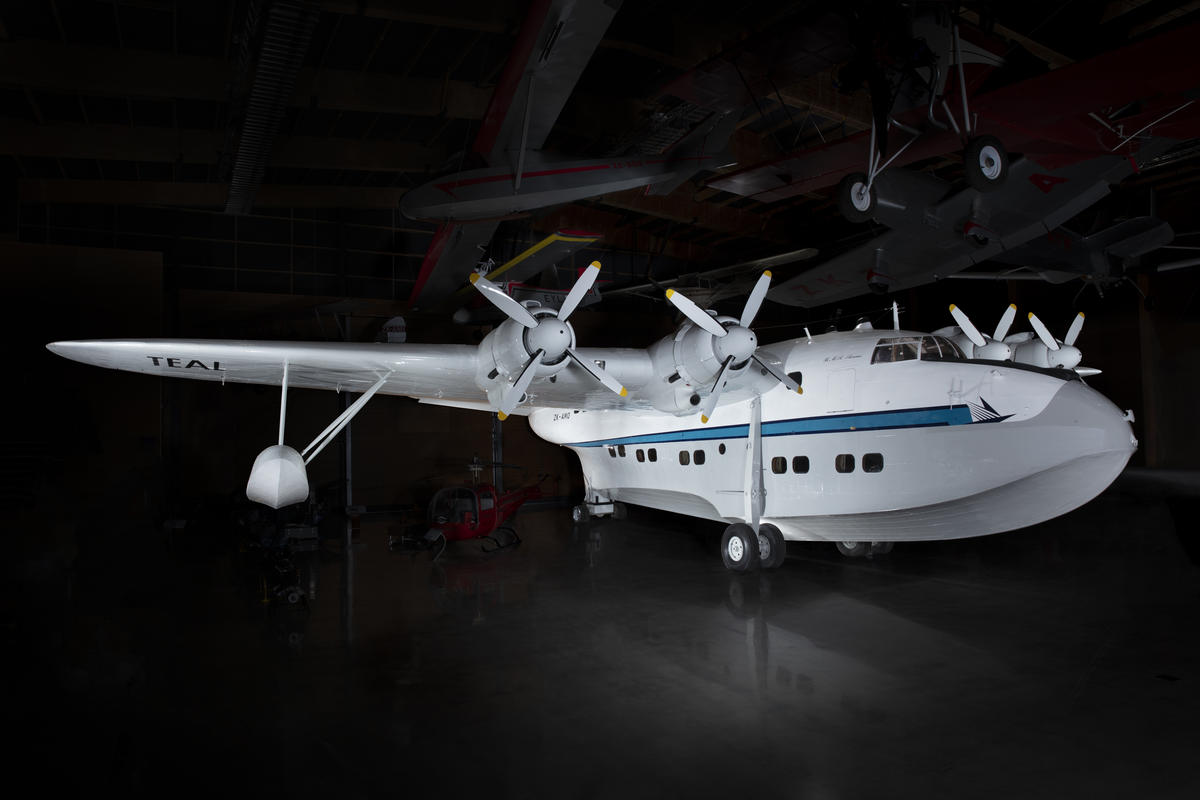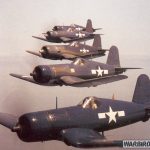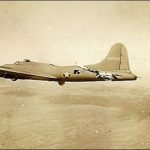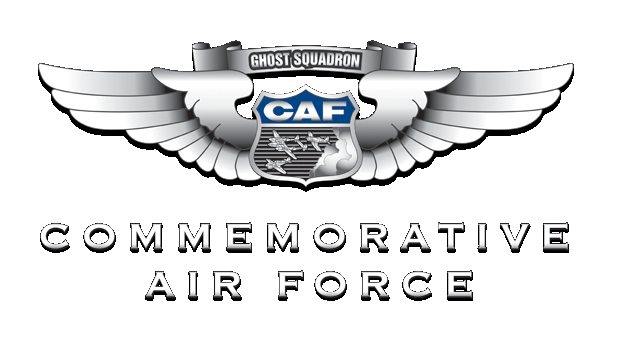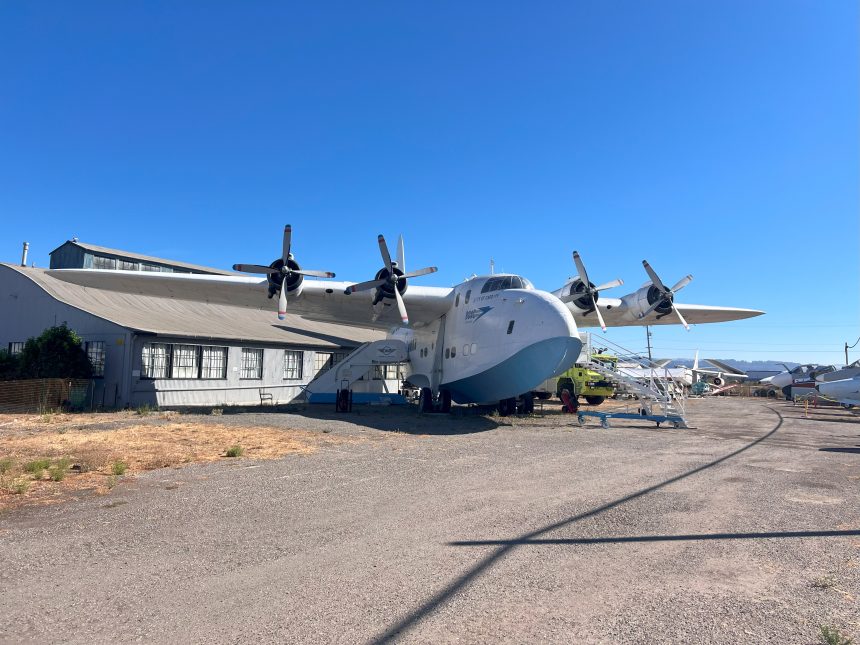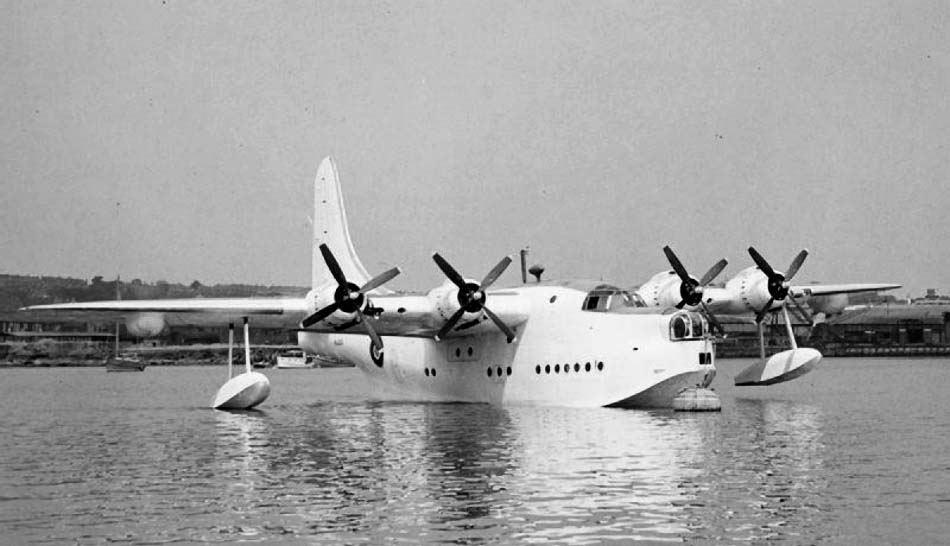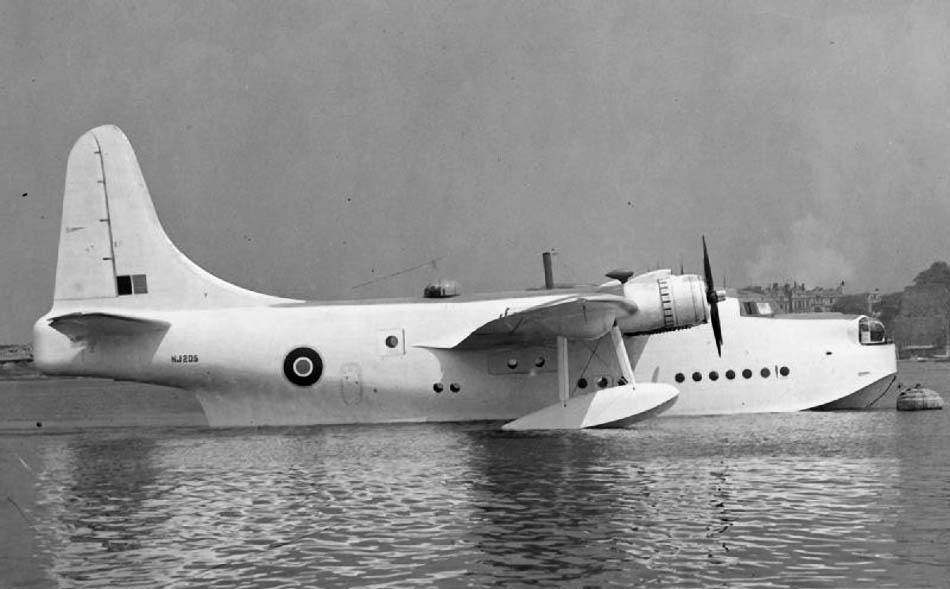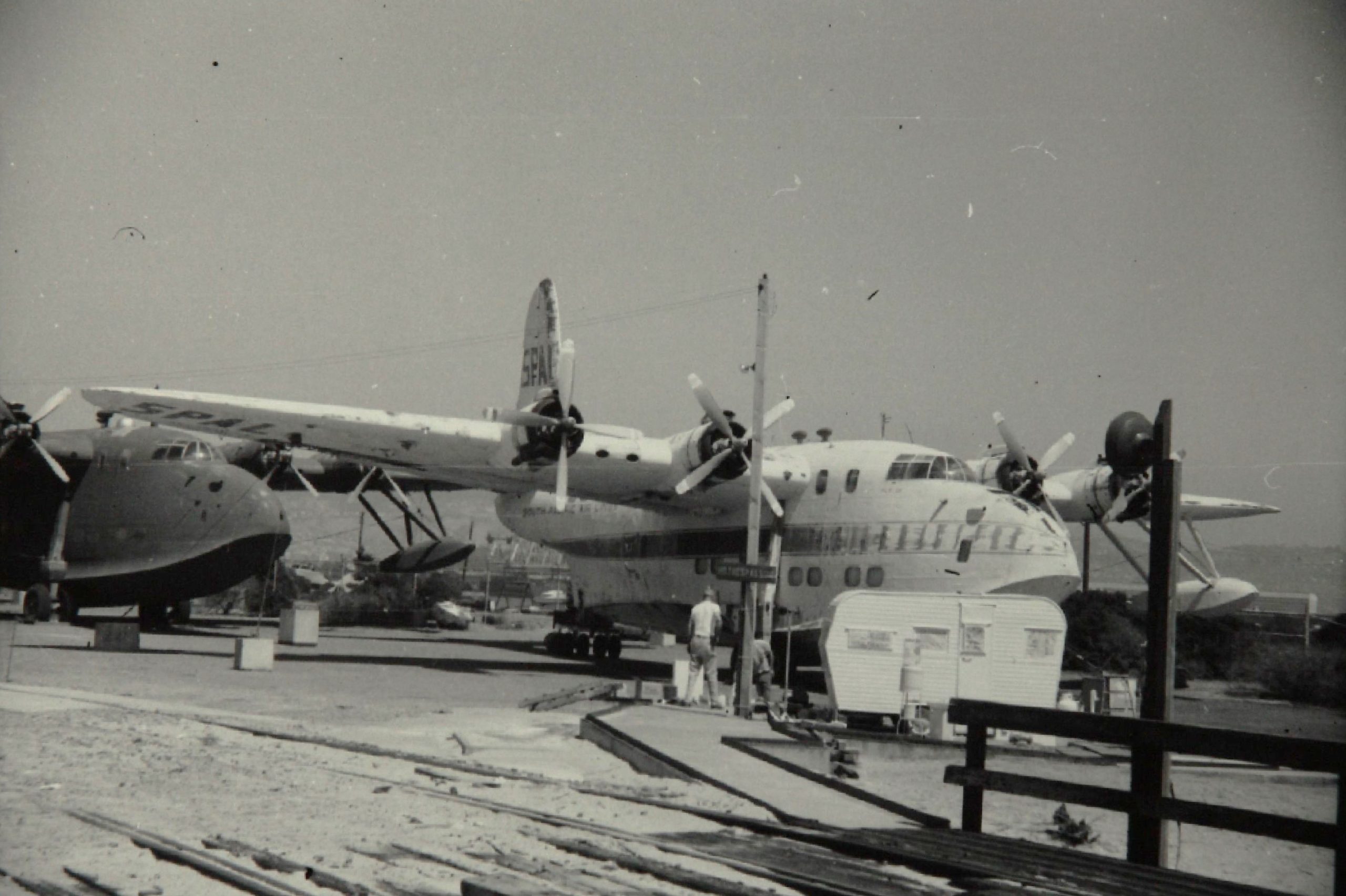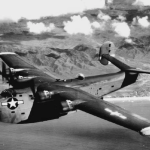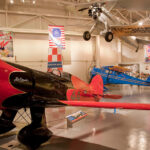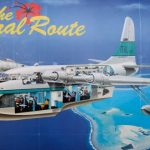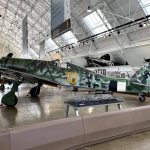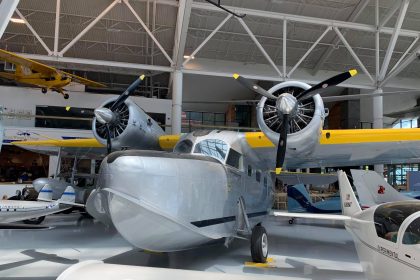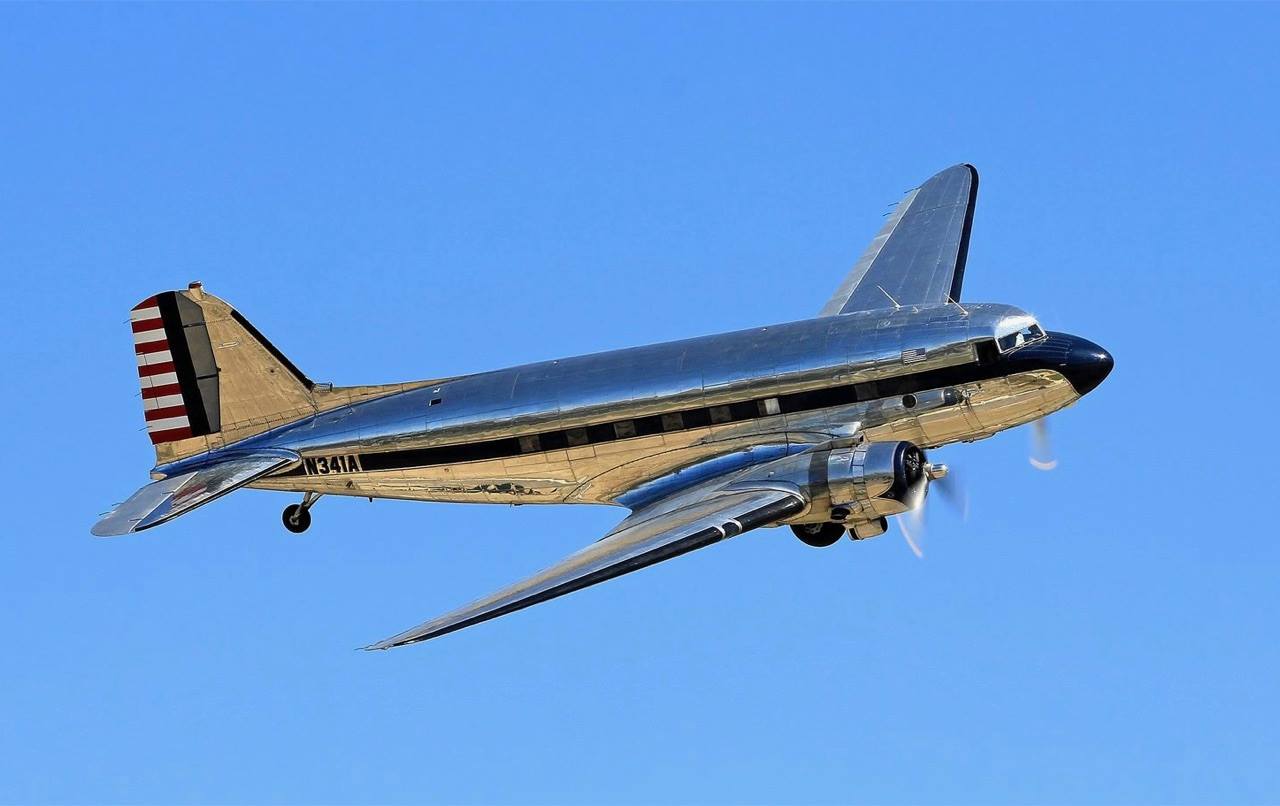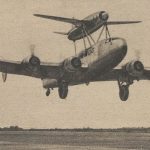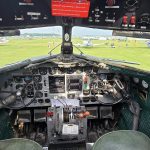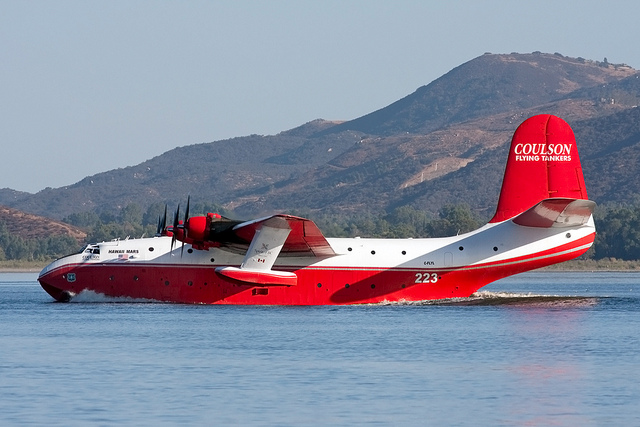In the early twentieth century, much of the world’s growing airlines were dominated by air travel by flying boat. It was an era where travelers dressed in their finest attire and were served meals that wouldn’t be out of place at an upscale hotel, and being able to land at destinations with no runways so long as they were on or near a large enough body of water was a huge advantage in an airline’s growth. However, with the construction of new airports around the world, and the advent of jet travel, the age of the flying boat airliner, like that of the ocean liner, had met its end, with much of the flying boat airliners being sent to the scrapyards. Yet if you travel to Oakland International Airport and head to the Oakland Aviation Museum, you will see that the centerpiece of this museum is one of the last examples of a four-engine flying boat airliner, a Short Solent. The story of how a British flying boat came to reside in the San Francisco Bay area is a fascinating story that spans the globe.

The story of the Short Solent at the Oakland Aviation Museum begins at the Short Brothers factory in Rochester, England during WWII with the production of the Short Seaford, an upgraded development of the Short Sunderland maritime patrol flying boat. The Seaford had originally been developed as the Sunderland Mk.IV, but with its Bristol Hercules radial engines, overload range of 3,100 miles, and its more powerful defensive armament, all intended for patrolling the Pacific Ocean, it was spun off as a separate development from the Sunderland. The aircraft now in Oakland was built with the construction number S.1295, and the RAF serial number NJ203. However, while the aircraft was still in the Rochester plant, the war with Japan came to an end on August 15, 1945, leaving the future of the aircraft, which had yet to be delivered to the RAF, uncertain.
On October 16, 1946, Seaford NJ203 was flown from Rochester on the River Medway to RAF Wig Bay Seaplane Base near Stranraer, Scotland, for storage. Ultimately, however, while it was decided that some Seafords would remain in service with the RAF, seven of the ten examples built, including NJ203, were flown to the Short Brothers factory (and later headquarters) in Belfast, Northern Ireland, with NJ203 being transferred to Belfast on September 25, 1947.
In Belfast, Seaford NJ203 was converted into a civilian airliner, the Short Solent. Retaining its four Bristol Hercules radial engines, the interior of the former patrol aircraft was exchanged for passenger cabins that could seat up to 34 passengers in luxurious comfort while being operated by a flight crew consisting of two pilots, a flight engineer, navigator, and a radio operator, with up to three flight attendants. On December 2, 1947, the aircraft came onto the British Aircraft Register as G-AKNP, was registered to British Overseas Airways Corporation (BOAC) and would be used for airline service across the postwar British Empire. In line with BOAC’s policy of naming their individual aircraft, G-AKNP was given the name City of Cardiff.
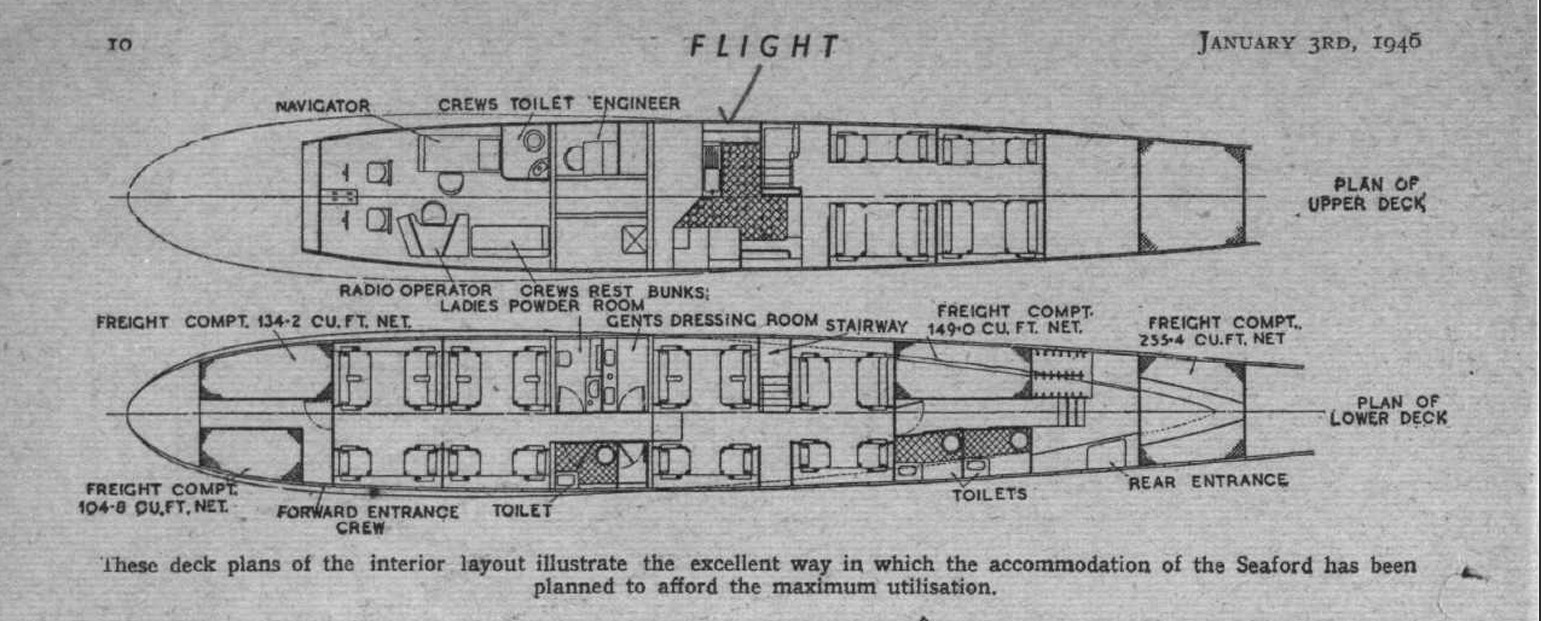
The new Solents were far from the only military flying boats built by Short to be converted to civilian use. Indeed, examples of the venerable Short Sunderland were converted into the Short Hythe and a more specialized civil version, the Short Sandringham. All three of these airliners had two decks for passengers, with seats that could be folded down to be turned into beds for overnight flights, two freight compartments in the nose and the tail, stairways to access the two decks, and a galley to provide inflight meals and refreshments.
After receiving its Certificate of Airworthiness (CoA) on March 19, 1949, the City of Cardiff began operations with BOAC on May 15 by flying a route from Southampton, England to Nairobi, Kenya via landing at Lake Naviasha, 48 miles (78 kilometers) northwest of Nairobi. But the days of BOAC’s flying boat service were coming to a close, especially with the construction of airports around the world during WWII and the introduction of landplane airliners that could operate from these new airports, and which could fly further, higher, and faster than the flying boats. City of Cardiff was among the last flying boats in service with BOAC, completing its last flight for the airline on November 2, 1950, when it flew from Augusta, Sicily to Southampton, where she was then flown back to Belfast on November 8, 1950. Once again, the aircraft was placed in storage, awaiting its next assignment.

This second period of storage was to prove brief, however, as the aircraft was acquired by Trans-Oceanic Airways (TOA) Limited of Sydney, Australia to replace another Solent, VH-TOA (formerly BOAC’s City of London), that was destroyed at Malta during its delivery flight to Australia. Painted in Trans-Oceanic Airways livery at Belfast, the aircraft would retain its British registry code until its arrival in Australia. On March 24, 1951, G-AKNP departed Belfast for Sydney, landing in Sydney’s Rose Bay on April 4, from which it flew two promotional flights on April 6 and 9. By May 1, the aircraft received the Australian registration code VH-TOB and entered service as the Star of Papua, making its operational first flight with TOA from Sydney to Hobart on May 22, 1951.
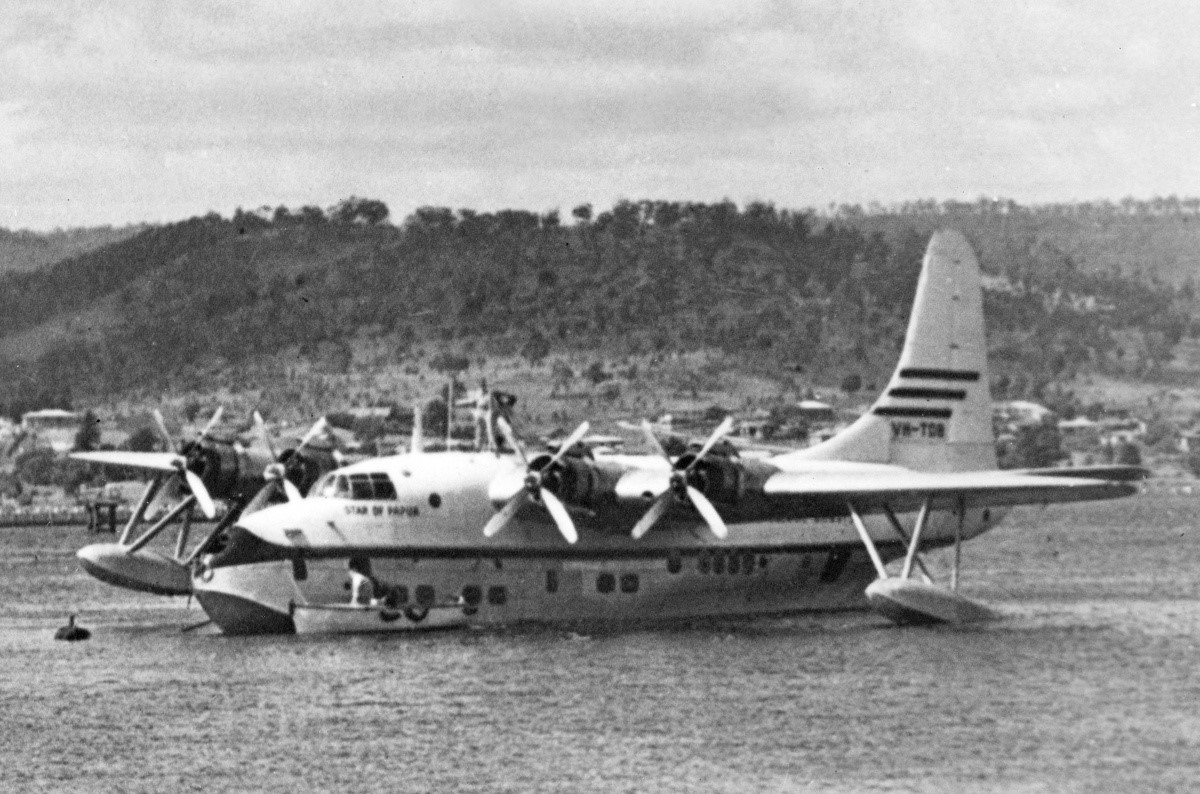
Four days later, Star of Papua operated the inaugural flight of Trans-Oceanic Airways’ “Chieftain Service”, flying from Sydney to Port Moresby via a stop in Brisbane, with Captains K. H. Goddard and P. H. Mathieson at the helm. Just one month later, the aircraft suffered its first incident on the night of June 18-19, 1951, when the aircraft was taxiing on the Brisbane River around midnight when two of its four engines gave out, and the aircraft collided with a fruit boat called the Florant. After receiving temporary repairs, VH-TOB was then flown to Sydney for more permanent repairs, being out of service for four weeks.
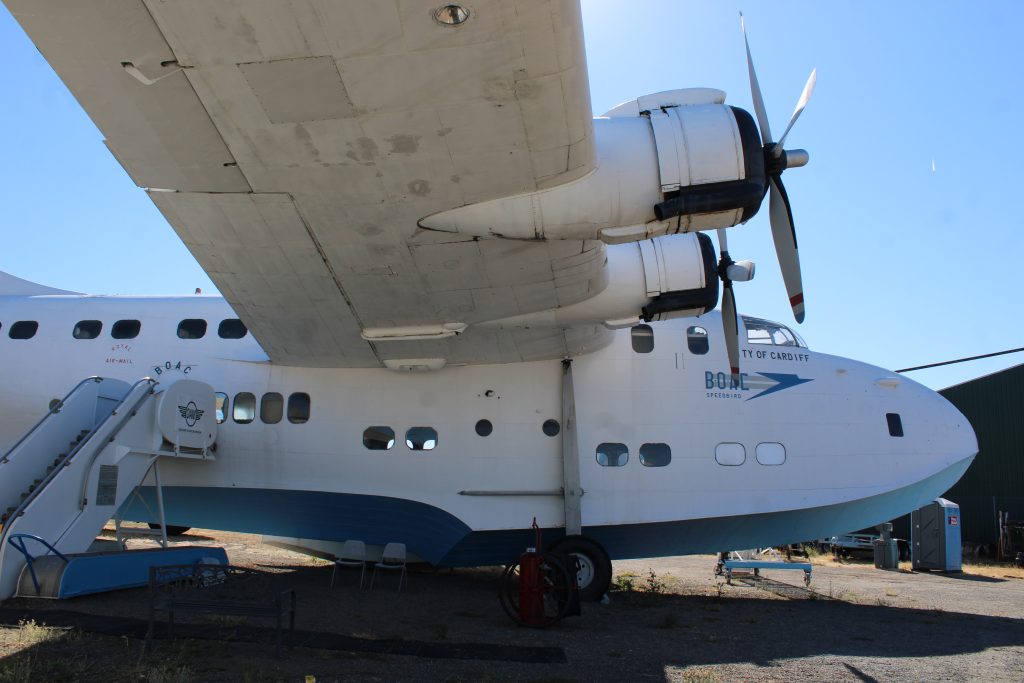
Star of Papua suffered another incident less than a year later on February 11, 1952, when the propeller and reduction gear for the number 4 engine detached from the aircraft over the Bass Strait on a flight from Sydney to Hobart. However, it was able to continue its flight to Hobart, where it was repaired and returned to service. The final incident suffered by the aircraft in Australia took place on March 22, 1952, when it had another collision with a boat on the Brisbane River and was once again sent for repairs before resuming service. However, this resumption of service with TOA would be exceedingly brief.

During the Star of Papua’s service with Trans-Oceanic Airways, the company was already suffering financial constraints and increasing competition from other domestic airlines with larger fleets. Incidents such as those suffered by the Staar of Papua and her fellow flying boats did not help TOA’s fortunes, and the company went into liquidation on July 1, 1952, and was ultimately declared insolvent by April 1953. Its assets were sold off, with its fleet of flying boats either finding new owners or going to the scrapyard. In the case of the Short Solent Star of Papua, though, it and another Short Solent at TOA, VH-TOD Star of Samoa (which had flown for BOAC as G-AHIO Somerset) were sold to Dollar Associates, Inc., of Reno, Nevada, to be used in a new airline venture called South Pacific Air Lines Inc (SPAL).
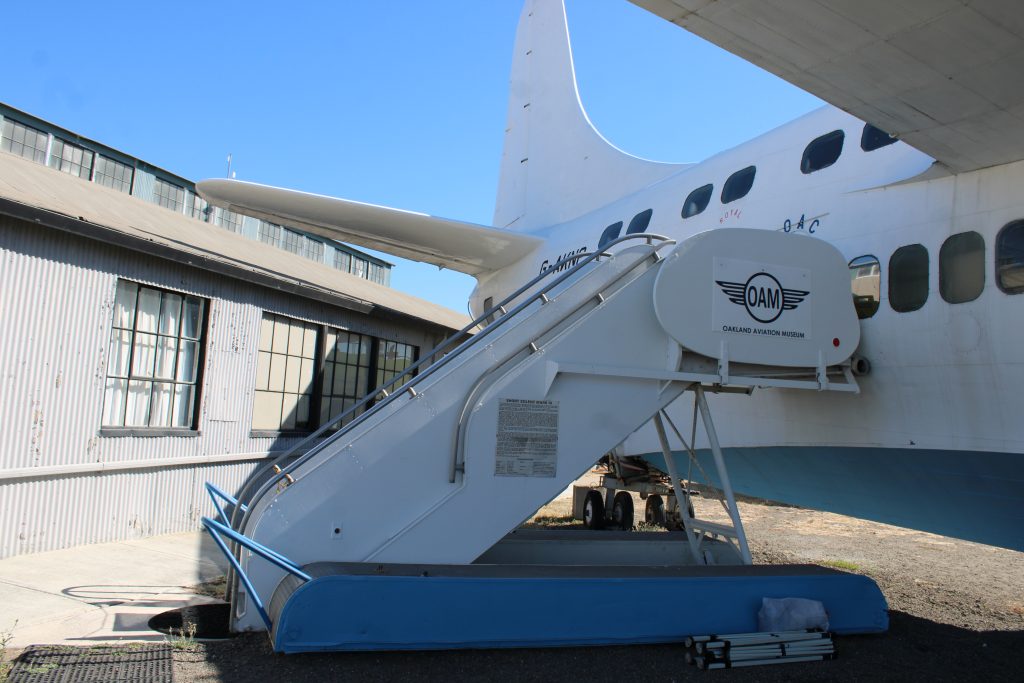
By this time, the age of the flying boat had largely come to a close, as two of the largest airlines to operate this type of aircraft, BOAC and the US-based Pan American Airways had retired all of their flying boats in favor of landplanes, which would be reinforced with the introduction of the jetliner. But yet there was still a desire to operate flying boat airliners, and South Pacific Air Lines hoped to use the Short Solents on routes from Hawaii to British-administered Christmas Island (now called Kiritimati, and part of the Republic of Kiribati), and Fiji, promising US travelers unparalleled access to the tropical beauty of the South Pacific.

On May 1, 1954, VH-TOB received the US registration N9946F, and was flown on a ferry flight from Sydney to Oakland, California on May 12, 1954, with refueling stops in Fiji, Canton Island, (now part of Kiribati), and Honolulu. At Oakland, N9946F was refurbished by Transocean Air Lines with a new interior and was given a new name: Isle of Tahiti. The aircraft was also joined by two more Solent flying boats: Star of Samoa VH-TOD (which was registered as N9945F) and former BOAC Solent Singapore G-AKNT (registered as N9947F). Being in the best condition among the three Solents in California, Isle of Tahiti received its US Certificate of Registration on October 29, 1958. One month later, on November 13, 1958, N9946F made its first flight over Oakland, which served as a warmup before the first proving flight of SPAL’s route to Hawaii, Kiritimati, and Fiji. After this proving flight, SPAL would then open flight service with their Short Solents to the South Pacific.

One month after the test flight, in December 1958, Short Solent N9946F flew out of the San Francisco Bay and landed at Honolulu, after which it would take on fuel to fly to Christmas Island However, it would never fly to Christmas Island. At this point in the Cold War, the United Kingdom was beginning to test its own nuclear weapons, and in addition to test detonations in the Australian outback, they determined that Christmas Island/Kiritimati was to be selected as a site for nuclear weapons testing, and thus SPAL’s permission to continue its flight to Kiritimati as a transit stop to Fiji was withdrawn. As such, N9946F was flown back to Oakland to rejoin the other Solents, as all three now faced an uncertain future once again while the airports on Fiji and Samoa were renovated to accommodate jetliners for the world’s major airlines.
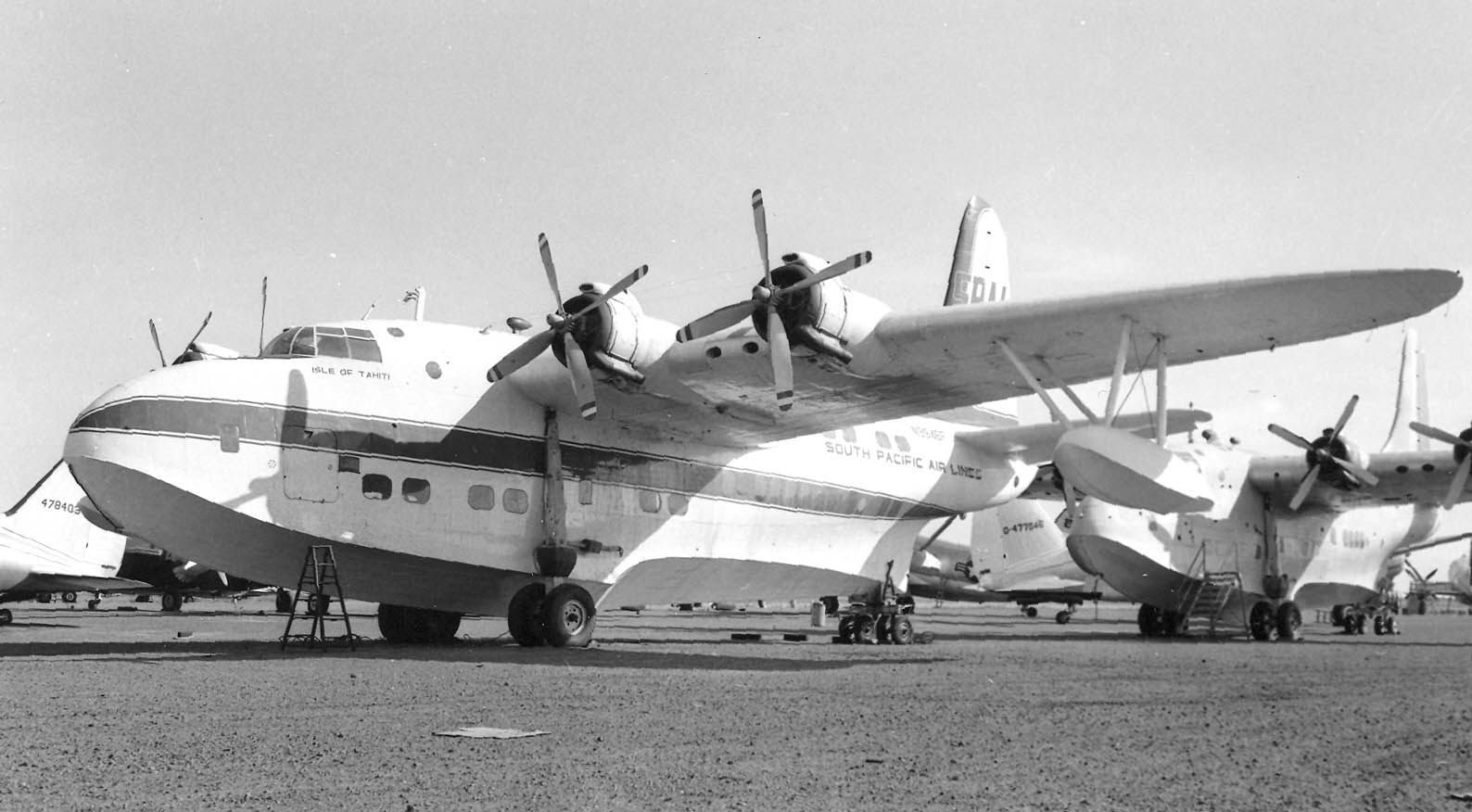
It was at this point that the three Short Solents at Oakland were purchased by Howard Hughes through the Hughes Tooling Company. In typical fashion for Hughes, he never revealed his plans for the three Solents, but he kept them under armed guard before they were towed by barge to the city of Richmond, where they were left outside in the salty and foggy sea air of the East Bay. By 1973, both N9945F and N9947F would be sold for scrap, but given the difficulty of scrapping the other flying boats, N9946F was offered for sale. One effort would have seen the aircraft shipped back to its birthplace of Rochester, England to serve as a memorial to Short Brothers, provided the city pay for the dismantling and shipping of the Solent. At a price tag of $150,000 (about $1,073,212 in 2025), however, the city of Rochester declined the offer, and the aircraft remained in Richmond. Similar attempts to purchase the aircraft also fell through due to the estimated costs for shipping, restoration, and maintenance.
By 1976, the aircraft was listed in the catalog of the Trade-A Plane magazine, and later that year, the aircraft was acquired by two brothers and business partners, Rich and Randy Grant, who would later go on to found their own engineering firm in Richmond in 1982 that remains in business today. The Grant brothers hoped to restore the Short Solent to flying condition, with the goal of having it ready for charter services, flying marine scientists on expeditions to some of the most remote places in the world. During this point, the aircraft was given the name Halcyon, and on April 7, 1981, the Solent’s Bristol Hercules engines roared to life for the first time in over 20 years. It was also around this time that the aircraft would become a set piece for the first Indiana Jones movie, Raiders of the Lost Ark.

In what is perhaps the most discussed aspect of Solent S.1295’s existence, N9946F was used as a stand-in for a Pan American “China Clipper” flying boat in the first Indiana Jones movie Raiders of the Lost Ark, in which Indiana Jones travels across the Pacific, unbeknownst to the fact that Nazi agent Major Arnold Toht is following him on the same aircraft. While the Solent’s flying sequences were shot using close ups of a scale model, the aircraft really did rev up its engines, but despite appearances in the film, did so without getting into the water. Scenes of the Solent were placed against the background of a matte painting, which constituted the pier and the background scenery in the Clipper scene, and the technique was later used to depict the warehouse in which the Ark of the Covenant was placed into deep storage at the end of the film.
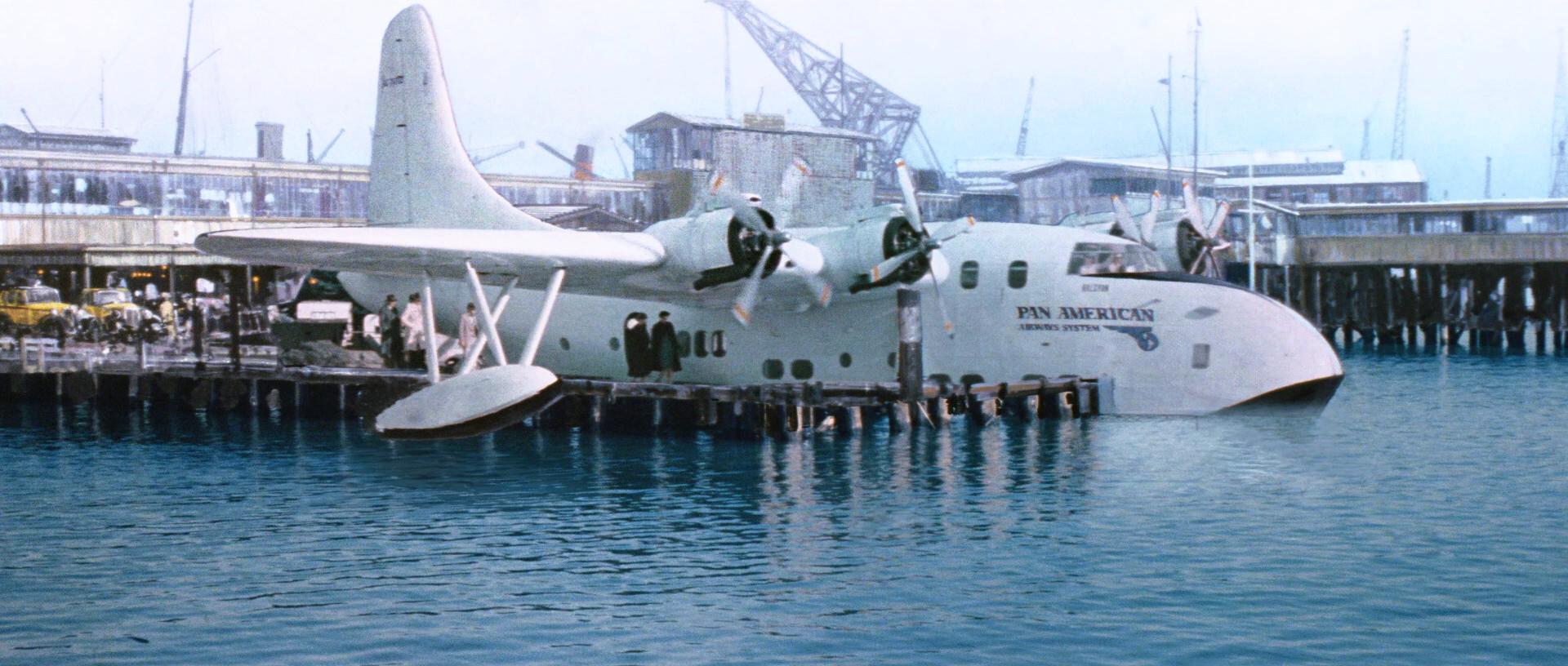
By 1987 it was evident that the Short Solent City of Cardiff, renamed Star of Papua, Isle of Tahiti, Halcyon, and lastly Seaflite, would not be returning to the skies, as no customers were interested in sponsoring the restoration of the aircraft for contract work. Luckily for the aircraft, a new museum in Oakland was interested in preserving her. On August 12, 1987, Short Solent N9946F was loaded once more onto a barge and towed from Richmond back to Oakland, where it would join the collection of the Western Aerospace Museum (today called the Oakland Aviation Museum). Originally displayed at the museum in its RAF paint scheme as NJ203, its exterior has been repainted to reflect its service with BOAC as G-AKNP City of Cardiff. Today, the British-built flying boat remains the centerpiece of the OAM, and visitors to the museum can go on guided tours of the interior on Sunday afternoons offered at 12:00pm, 1:00pm, and 2:00pm. To learn more about the Oakland Aviation Museum, visit the museum’s website HERE
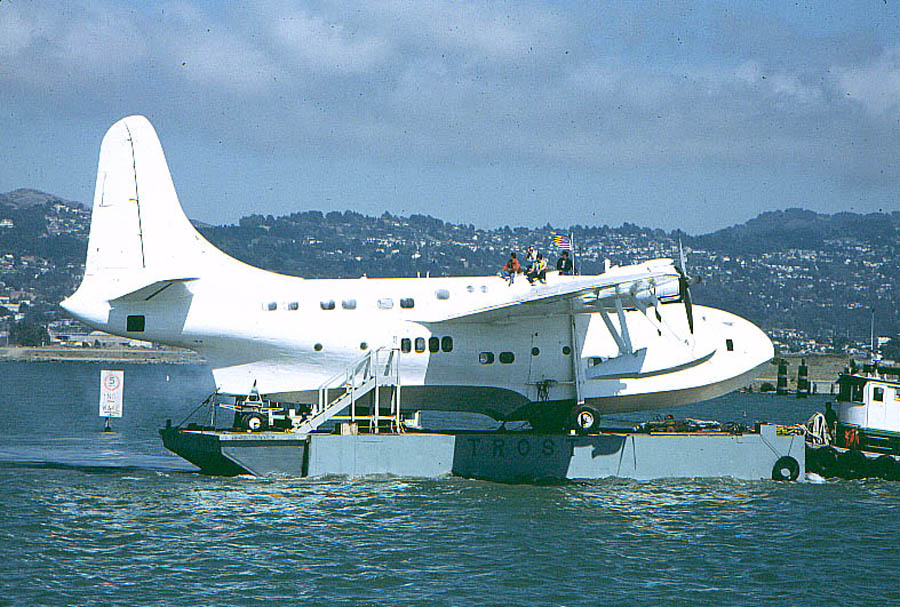
In addition to the City of Cardiff in Oakland, there is only one other surviving example of a Short Solent anywhere in the world. This Solent, built in Belfast as a Solent, and which was never built originally as a Seaford, was flown by the New Zealand-based airline Tasman Empire Airways Limited (TEAL) as ZK-AMO and was named Aranui (Māori for “great way”). From 1949 to 1960, the aircraft flew routes all across the South Pacific before it was donated by TEAL to the Museum of Transport and Technology (MOTAT) in Auckland, where the fully restored aircraft rests proudly on display in MOTAT’s dedicated hangar alongside other historic aircraft, including a Short Sunderland flying boat. But the story of Aranui is worthy of its own dedicated article.
